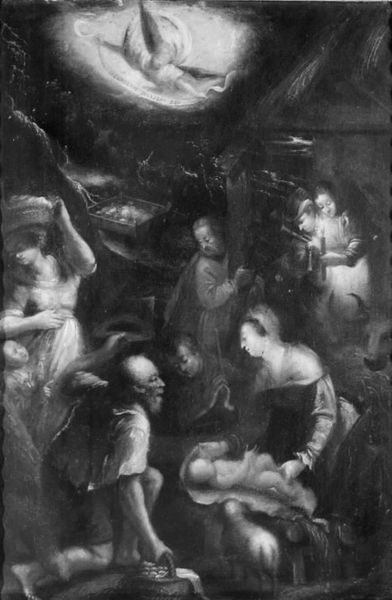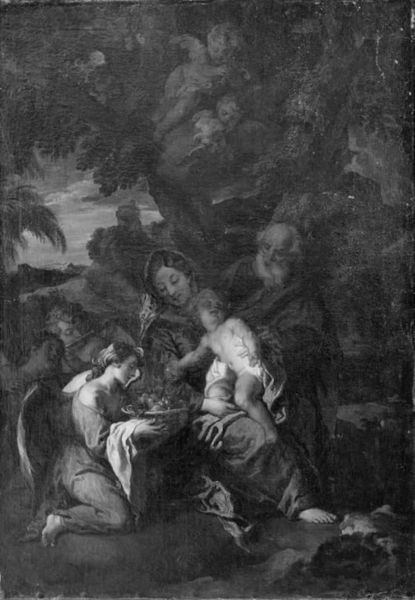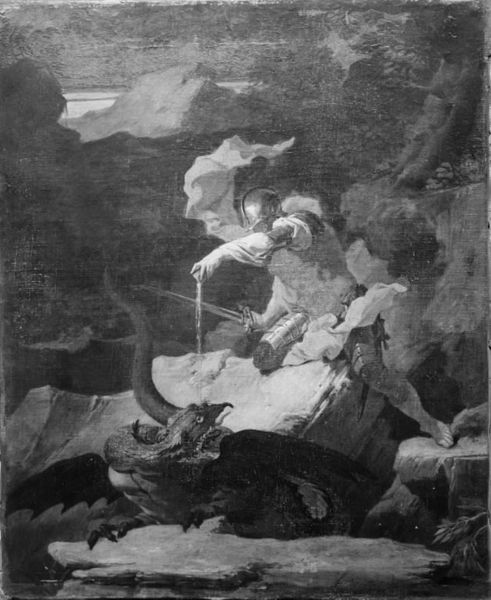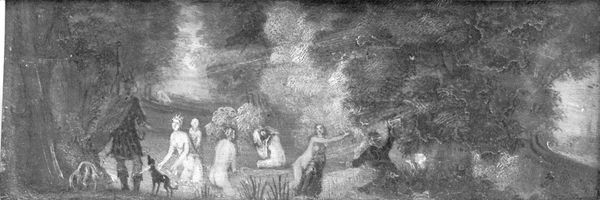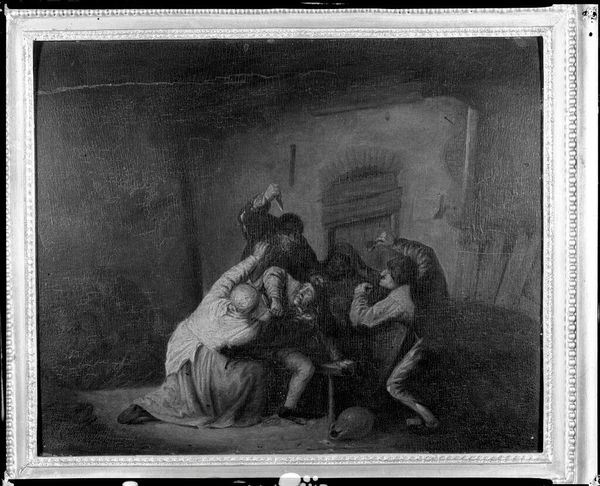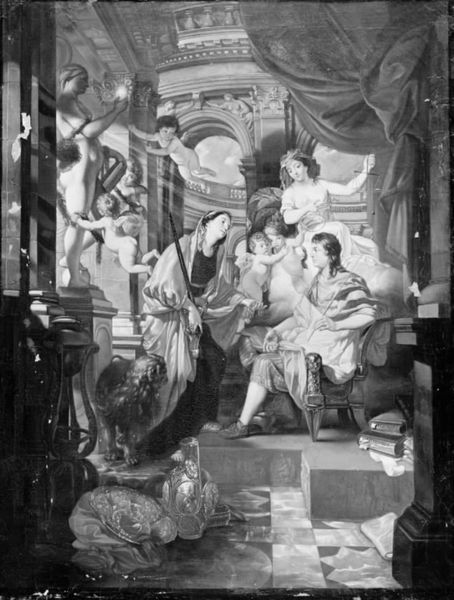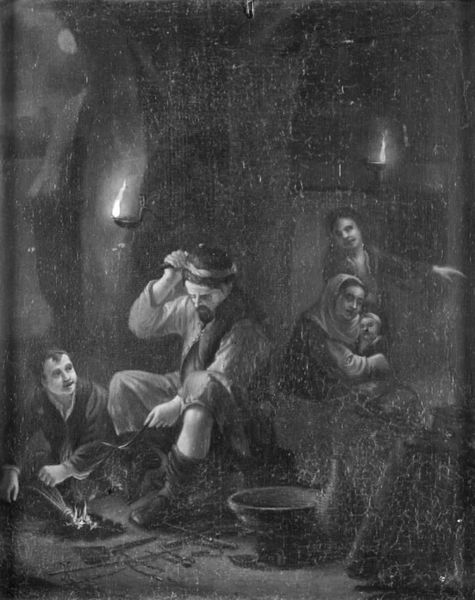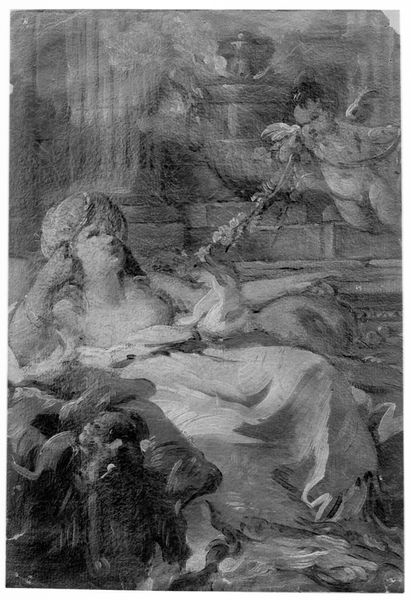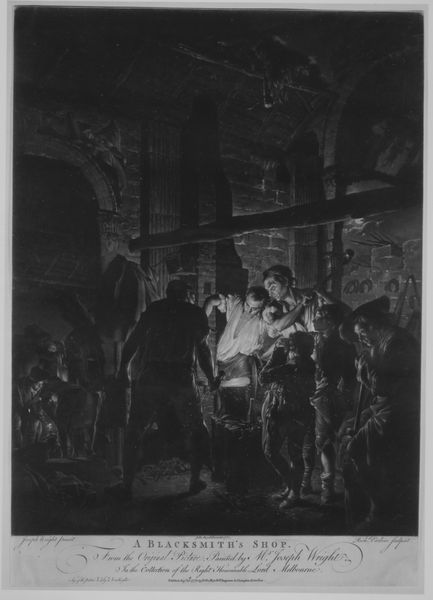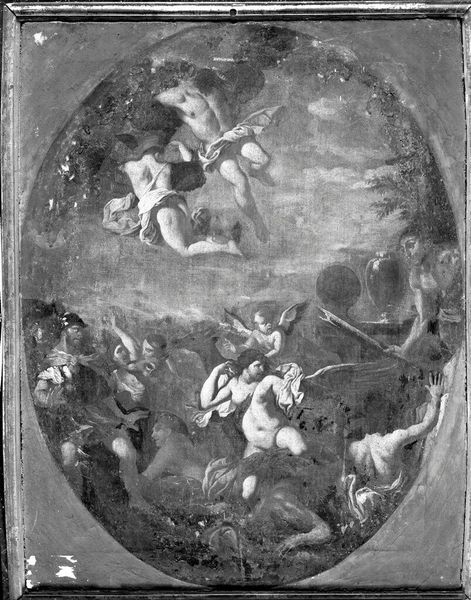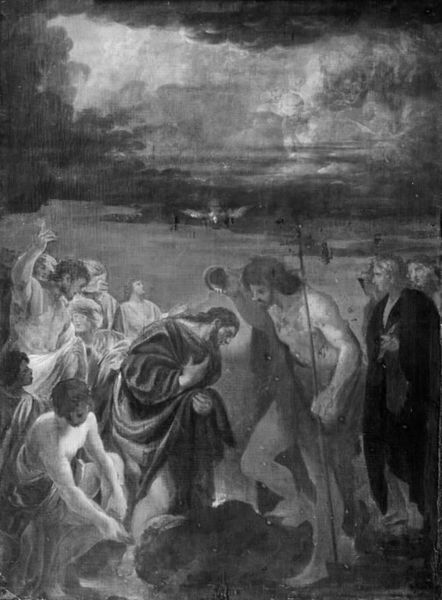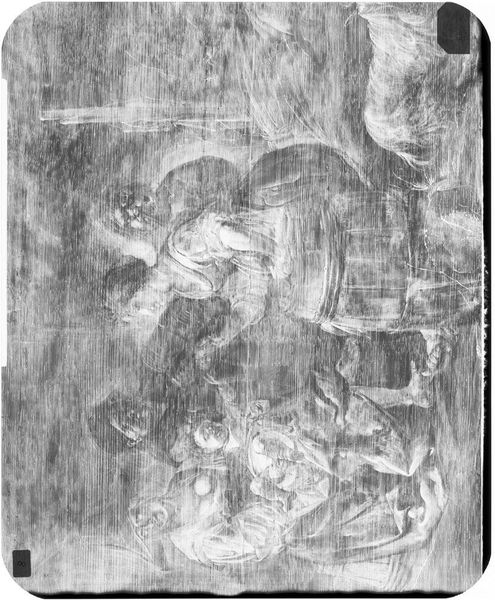
oil-paint, wood
#
portrait
#
narrative-art
#
baroque
#
oil-paint
#
charcoal drawing
#
monochrome colours
#
figuration
#
black and white
#
chiaroscuro
#
wood
#
history-painting
#
academic-art
#
monochrome
#
charcoal
#
monochrome
Dimensions: 23.5 cm (height) x 18 cm (width) (Netto)
Curator: Let’s examine “Nudity with Man and Woman,” attributed to Pieter van der Werff, dating approximately from 1680 to 1722. It resides here at the SMK, Statens Museum for Kunst. Editor: Well, initially, I see high drama steeped in darkness. The monochromatic palette makes it difficult to parse initially, but a distinct narrative emerges. A mix of vulnerability and veiled strength, almost like figures caught mid-flight, or rather, mid-journey perhaps? Curator: Precisely. It’s an oil painting on wood, which provides a smooth surface allowing for a very precise level of detail, especially evident in the figures’ anatomy. Van der Werff, an accomplished Academic artist, utilizes the contrast of light and shadow to dramatic effect. It’s interesting how that materiality affects our interpretation. Editor: Indeed. It’s impossible to ignore that high contrast—the classic chiaroscuro that injects drama and also obfuscates. Consider its cultural positioning: Academic art upholding ideals, likely patronized by institutions that wished to propagate certain narratives or codes of behaviour. Curator: Notice the texture implied through controlled brushstrokes – rendering skin tones but also drawing our attention to folds of fabric or the hard reflective surface of armor. He transforms simple raw materials – ground pigments, processed oil and a prepared panel of wood – into a compelling tableau. It asks the questions of how value and quality are applied through the skilled application of physical components. Editor: How are these figures, placed within this high contrast history painting being utilized? This work fits squarely within the tradition of Baroque history painting, and considering the title, there’s undoubtedly a strong implication that moral lessons and public virtue is an underlying premise for this image, perhaps an exercise in restraint? Curator: And yet, look at the material fact of their near nudity. That invites debate on labour: how did van der Werff and his assistants craft those bodies from these raw ingredients? Consider the hours and process applied in developing these scenes; its creation is deeply embedded in the economic circumstances of its time. Editor: I agree. Thinking about the process as much as the projected narrative broadens my appreciation. I now consider the painting in light of social contexts during the late Baroque period in European society. It allows us to view its lasting impact while offering commentary and artistic insight into socio-economic relationships that echo to the present day. Curator: Well put. Examining it from those varied perspectives definitely helps shed light on the context.
Comments
No comments
Be the first to comment and join the conversation on the ultimate creative platform.
